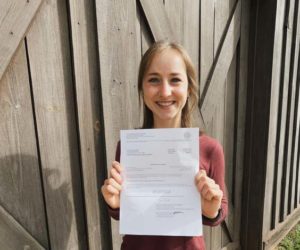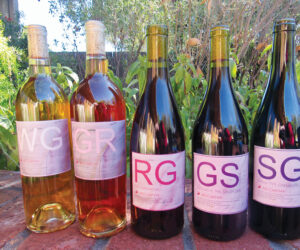Teaching the next generation

Fourteen years ago, when I started making wine, I would have never predicted that I would also be teaching my children the skill. My daughter, who is now 6, could not wait to be daddy’s big helper in the fall when I needed to “degas” the latest batch of Merlot. When it was time to bottle, she was as excited to sanitize, filter (yes, we filter our wine), and bottle this year’s blend. For several years, I entered my wine into the WineMaker International Amateur Wine Competition and entries are typically due in March, which requires bottling to occur at least a month beforehand.
In the fall of 2022, we fermented 5 gal. (19 L) of both Merlot and Cabernet Sauvignon as well as 1 gal. (3.8 L) of Malbec. In our 5-gallon (19-L) oak barrel, we combined Cabernet Sauvignon, Merlot, and Malbec, with Cabernet being dominant at 52%. In a glass carboy, we have 51% Merlot. Call it an experiment if you will, but I truly wanted to see the flavor profiles both created. Chemistry in real life I guess you would call it.
For the 2023 Wine Competition, we bottled only the wine in the glass carboy. This blend would be akin to a Right Bank style of Bordeaux where wine blends are dominant in Merlot. The oak barrel blend will age for much longer.
This winter, my daughter was so excited and eager to lend a hand. She was right there learning how to sanitize the carboys, tubing, and filters. Sanitizing the equipment is by far and away the most important step, which I probably told her 50,000 times. Afterwards, she learned how to operate the filtration system. A few years ago, a friend of mine once compared the filtering system to dialysis and, you know what, it is similar! It takes the wine from the carboy, runs it through three filter pads and then outputs it into another carboy.
We typically filter twice. The first run is to get large particles and the second is to polish and clear undesired microorganisms. The wine typically looks amazing, but I do realize filtering wine remains a controversial subject for many wineries and home winemakers.
I love spending the quality time with her and educating her about such a special skill like winemaking.
After filtration, my daughter sanitized each bottle, I filled them, and then she pushed the closure device down to secure the screw cap on the bottle. We worked together like a well-oiled machine. At one time, my wife came down to watch the two of us and my daughter showed her how to sanitize the bottles. She even said, “you know mommy, sanitizing is the most important step.” This made me so proud. I probably had the biggest smile ever at that very moment.
I love spending the quality time with her and educating her about such a special skill like winemaking. Knowing how to make wine is truly chemistry in real life: Taking ingredients, combining them, and allowing nature to do what it does. I enjoy the different steps involved; the different ingredients involved. The sanitation, the bottling, the capping, and then the cleaning. Oh, the cleaning. What a mess we made, but boy was it fun.
The following day, she helped me label a single bottle, wrap it tightly, and get it ready to ship. Unfortunately, we did not win anything this year; however, the comments were spot on. Again, it was the glass carboy batch, so the lack of tannin was quite noticeable. But you know what? She made this batch, her very first wine, and I was her assistant just showing her the ropes. That Bordeaux blend from Canfield? It was made by a 5-year-old, and it is spectacular . . . maybe we’ll medal next year!





